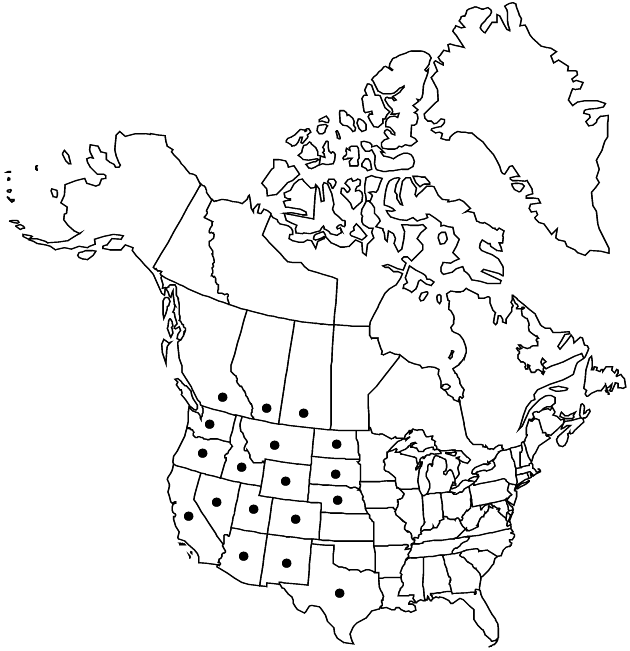Difference between revisions of "Dieteria canescens"
Trans. Amer. Philos. Soc., n. s. 7: 300. 1840.
FNA>Volume Importer |
RevisionBot (talk | contribs) m (Bot: Adding category Revised Since Print) |
||
| (7 intermediate revisions by 3 users not shown) | |||
| Line 8: | Line 8: | ||
}} | }} | ||
|common_names=Hoary-aster | |common_names=Hoary-aster | ||
| − | |basionyms={{Treatment/ID/ | + | |special_status={{Treatment/ID/Special_status |
| + | |code=F | ||
| + | |label=Illustrated | ||
| + | }} | ||
| + | |basionyms={{Treatment/ID/Basionym | ||
|name=Aster canescens | |name=Aster canescens | ||
|authority=Pursh | |authority=Pursh | ||
| + | |rank=species | ||
| + | |publication_title=Fl. Amer. Sept. | ||
| + | |publication_place=2: 547. 1813 | ||
}} | }} | ||
|synonyms={{Treatment/ID/Synonym | |synonyms={{Treatment/ID/Synonym | ||
|name=Machaeranthera canescens | |name=Machaeranthera canescens | ||
|authority=(Pursh) A. Gray | |authority=(Pursh) A. Gray | ||
| + | |rank=species | ||
}} | }} | ||
|hierarchy=Asteraceae;Asteraceae tribe Astereae;Dieteria;Dieteria canescens | |hierarchy=Asteraceae;Asteraceae tribe Astereae;Dieteria;Dieteria canescens | ||
| Line 26: | Line 34: | ||
-->{{Treatment/Body | -->{{Treatment/Body | ||
| − | |distribution= | + | |distribution=Alta.;B.C.;Sask.;Ariz.;Calif.;Colo.;Idaho;Kans.;Mont.;N.Dak.;N.Mex.;Nebr.;Nev.;Oreg.;S.Dak.;Tex.;Utah;Wash.;Wyo.;nw Mexico. |
|discussion=<p>Varieties 10 (10 in the flora).</p> | |discussion=<p>Varieties 10 (10 in the flora).</p> | ||
|tables= | |tables= | ||
| Line 130: | Line 138: | ||
-->{{#Taxon: | -->{{#Taxon: | ||
name=Dieteria canescens | name=Dieteria canescens | ||
| − | |||
|authority=(Pursh) Nuttall | |authority=(Pursh) Nuttall | ||
|rank=species | |rank=species | ||
| Line 137: | Line 144: | ||
|basionyms=Aster canescens | |basionyms=Aster canescens | ||
|family=Asteraceae | |family=Asteraceae | ||
| − | |distribution= | + | |distribution=Alta.;B.C.;Sask.;Ariz.;Calif.;Colo.;Idaho;Kans.;Mont.;N.Dak.;N.Mex.;Nebr.;Nev.;Oreg.;S.Dak.;Tex.;Utah;Wash.;Wyo.;nw Mexico. |
|reference=None | |reference=None | ||
|publication title=Trans. Amer. Philos. Soc., n. s. | |publication title=Trans. Amer. Philos. Soc., n. s. | ||
|publication year=1840 | |publication year=1840 | ||
| − | |special status= | + | |special status=Illustrated |
| − | |source xml=https:// | + | |source xml=https://bitbucket.org/aafc-mbb/fna-data-curation/src/2e0870ddd59836b60bcf96646a41e87ea5a5943a/coarse_grained_fna_xml/V19-20-21/V20_909.xml |
|tribe=Asteraceae tribe Astereae | |tribe=Asteraceae tribe Astereae | ||
|genus=Dieteria | |genus=Dieteria | ||
| Line 148: | Line 155: | ||
}}<!-- | }}<!-- | ||
| − | -->[[Category:Treatment]][[Category:Dieteria]] | + | --> |
| + | |||
| + | [[Category:Treatment]] | ||
| + | [[Category:Dieteria]] | ||
| + | [[Category:Revised Since Print]] | ||
Latest revision as of 18:31, 6 November 2020
Annuals, biennials, or short-lived perennials, (subshrubs in var. ziegleri). Stems, branches, and peduncles glabrous, puberulent, or canescent, sometimes also stipitate-glandular or gland-dotted. Leaf blades linear-lanceolate to linear or linear-oblanceolate (ovate to obovate in var. leucanthemifolia), mid 10–60 × 1.5–6(–8) mm, margins entire to irregularly dentate or serrate, faces glabrous, puberulent, or canescent, sometimes sparsely stipitate-glandular; distal bases not clasping or slightly clasping (clasping in var. leucanthemifolia). Involucres campanulate or turbinate. Phyllaries in 3–10 series, appressed, spreading, or reflexed, indurate bases usually glabrous, apices acute to acuminate, 1–3 mm, herbaceous, faces glabrous (indurate bases, sometimes foliaceous parts) or hairy (only foliaceous parts), sometimes stipitate-glandular. Receptacles 2.5–5 mm diam. Ray florets pistillate and fertile, or sterile or 0 (in var. shastensis); laminae white, blue, or purple, 6–12 × 1–3 mm. Disc florets: corollas 4–6(–7) mm. Cypselae glabrous or moderately appressed-hairy.
Distribution

Alta., B.C., Sask., Ariz., Calif., Colo., Idaho, Kans., Mont., N.Dak., N.Mex., Nebr., Nev., Oreg., S.Dak., Tex., Utah, Wash., Wyo., nw Mexico.
Discussion
Varieties 10 (10 in the flora).
Selected References
None.
Lower Taxa
Key
| 1 | Phyllaries usually appressed, sometimes spreading, rarely reflexed | > 2 |
| 1 | Phyllaries spreading to reflexed, rarely appressed | > 5 |
| 2 | Ray florets sterile or 0 | Dieteria canescens var. shastensis |
| 2 | Ray florets pistillate and fertile | > 3 |
| 3 | Phyllaries densely appressed-hairy, usually eglandular, sometimes sparsely stipitate-glandular, then obscured by appressed hairs | Dieteria canescens var. ambigua |
| 3 | Phyllaries glabrous or stipitate-glandular, rarely appressed-hairy or canescent | > 4 |
| 4 | Stems stipitate-glandular, sometimes also canescent, rarely glabrous | Dieteria canescens var. aristata |
| 4 | Stems glabrous, puberulent, or canescent, sometimes sparsely stipitate-glandular | Dieteria canescens var. glabra |
| 5 | Involucres (9–)10–16 mm | > 6 |
| 5 | Involucres 6–10(–12) mm | > 7 |
| 6 | Subshrubs; involucres (10–)12–16 mm; phyllary apices densely stipitate-glandular | Dieteria canescens var. ziegleri |
| 6 | Biennials or short-lived perennials; involucres (9–)10–15 mm; phyllary apices densely appressed-hairy, sometimes stipitate-glandular, then obscured by hairs | Dieteria canescens var. nebraskana |
| 7 | Stems canescent, sometimes sparsely stipitate-glandular | > 8 |
| 7 | Stems stipitate-glandular, usually also puberulent or canescent, sometimes glabrous | > 10 |
| 8 | Stem usually 1, stiffly erect, branches widely divaricate, straight, stiff | Dieteria canescens var. incana |
| 8 | Stems 1+, usually ascending, branches loosely spreading to ascending, not widely divaricate, curved, flexible | > 9 |
| 9 | Phyllaries in 5–10 series; ray florets pistillate and fertile | Dieteria canescens var. canescens |
| 9 | Phyllaries in 3–5(–7) series; ray florets sterile or 0 | Dieteria canescens var. shastensis |
| 10 | Stems canescent, usually gland-dotted; most peduncles 0 (heads sessile) or shorter than involucres | Dieteria canescens var. sessiliflora |
| 10 | Stems stipitate-glandular, also sometimes puberulent or canescent; peduncles equaling or longer than involucres | > 11 |
| 11 | Mid and distal leaf blades ovate, oblong, or obovate, lengths 1.5–4 times widths | Dieteria canescens var. leucanthemifolia |
| 11 | Mid and distal leaf blades linear-lanceolate to linear, lengths 4+ times widths | Dieteria canescens var. aristata |